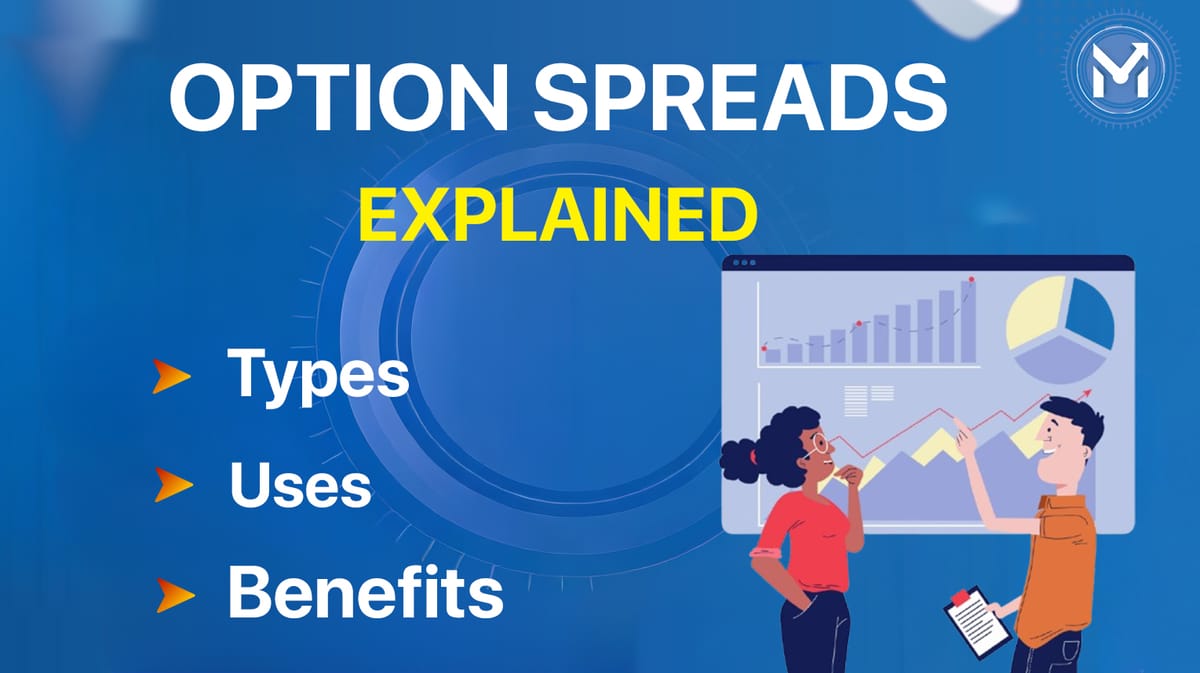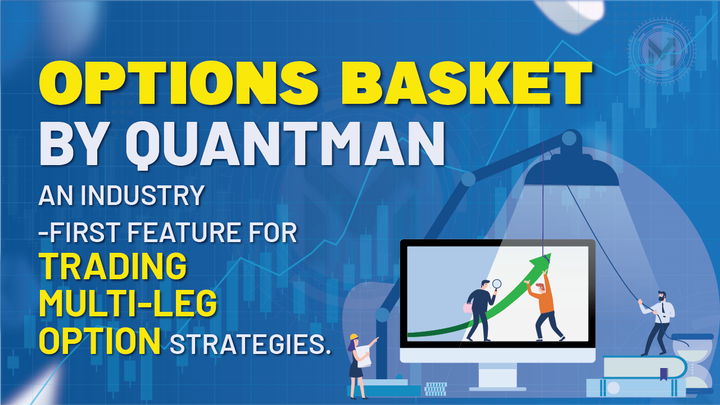Option Spreads Explained: Smarter Trading for Smarter Traders
Discover how option spreads help traders manage risk, reduce cost, and improve strategy. Learn the difference between credit and debit spreads, and how platforms like QuantMan make it easy to build, test, and execute spread strategies without coding.

If you are new to options trading or looking to trade with more control, then understanding option spreads is a great place to start. Rather than buying or selling a single option and exposing yourself to unlimited risk or low probabilities, spreads help you trade with structure, limited risk, and better cost efficiency.
In this blog, we will break down what spreads are, how they work, the different types available, and how you can build and test your own spread strategies using a platform like QuantMan.
What is an Option Spread?
An option spread involves buying and selling options of the same type, either calls or puts, on the same stock or index. The difference comes from strike prices, expiration dates, or both. The goal is to create a position that manages risk, reduces cost, and fits your view of the market.
Unlike naked options, option spread strategies come with defined risk and reward. This helps traders make more informed decisions without guessing what the worst-case scenario might be.
Types of Option Spreads
There are several types of option spreads, but here are the three most widely used:
Vertical Spread
This is the most common type. You buy and sell options of the same expiry but at different strike prices. For example, in a bull call spread option strategy, you buy a call at a lower strike and sell another at a higher strike. This setup works well when you're moderately bullish.
Calendar Spread
Also known as a horizontal spread, this strategy uses the same strike price but different expiration dates. You typically sell the near-term option and buy the longer-term one. It works best when you expect limited short-term movement but potential longer-term action.
Diagonal Spread
This is a mix of the two above. It involves different strikes and different expirations. Diagonal spreads give you more flexibility but require a stronger grasp of time decay and volatility.
Why Traders Prefer Spreads
Option spreads offer a combination of control and flexibility that naked options simply cannot provide. Here's why traders often choose them:
Defined Risk and Reward
Spreads tell you up front what your maximum gain and loss will be. There are no surprises, and you can size your trades confidently.
Capital Efficiency
Compared to naked selling, credit spread strategies require less margin. You can still benefit from selling premium without putting large amounts of capital at risk.
Higher Probability of Profit
Many credit spread options offer a higher chance of success than buying options outright. Instead of needing a big price move, the market only needs to stay above or below a certain level for you to profit.
Benefit from Time Decay
With the right structure, such as credit spreads or calendar spreads, time decay works in your favor. This can give you an edge, especially in sideways markets. With QuantMan, you can easily create and test these strategies to see how they perform in different market conditions.
With the right structure, such as credit spreads or calendar spreads, time decay works in your favor. This can give you an edge, especially in sideways markets.
Credit Spread vs Debit Spread
The difference between a credit spread and a debit spread comes down to how the trade is entered and what your outlook is.
- In a credit spread, you receive a net premium when opening the trade. These are great when you expect the market to stay within a range or move only slightly in your favor.
- In a debit spread, you pay to enter the trade, hoping the underlying makes a stronger directional move. For example, a bull call spread option strategy is a debit spread used when you expect moderate upside.
When comparing debit spread vs credit spread, it comes down to probability versus reward. Debit spreads offer larger potential gains but lower win rates. Credit spreads offer smaller gains but higher consistency.
With QuantMan, you can backtest both styles and see which one fits your trading style and risk tolerance.
Spreads vs Naked Option Trading
Naked options might offer high potential rewards, but they come with higher risks and lower probabilities of success. Buying a call or put requires a strong price move, and time decay often works against you. Selling naked options, while offering higher probabilities, exposes you to unlimited risk.
Spreads strike the right balance. You can still trade based on your market view but with protection and clearer outcomes. Whether it's a credit spread for a stable market or a debit spread for a directional bet, spreads allow you to plan better and stay disciplined.
Final Thoughts
If you're looking to improve your trading strategy, adding option spreads to your toolkit is a smart move. They give you structure, define your risk, and allow you to align your trades with the market more effectively.
Start by building and testing your own credit spread or debit spread strategies using QuantMan. With no coding required, it’s the easiest way to turn your ideas into backtested strategies you can trust.
Trade smarter. Trade safer. Trade with spreads.
To learn more about this topic in video format, please click the link and watch.



